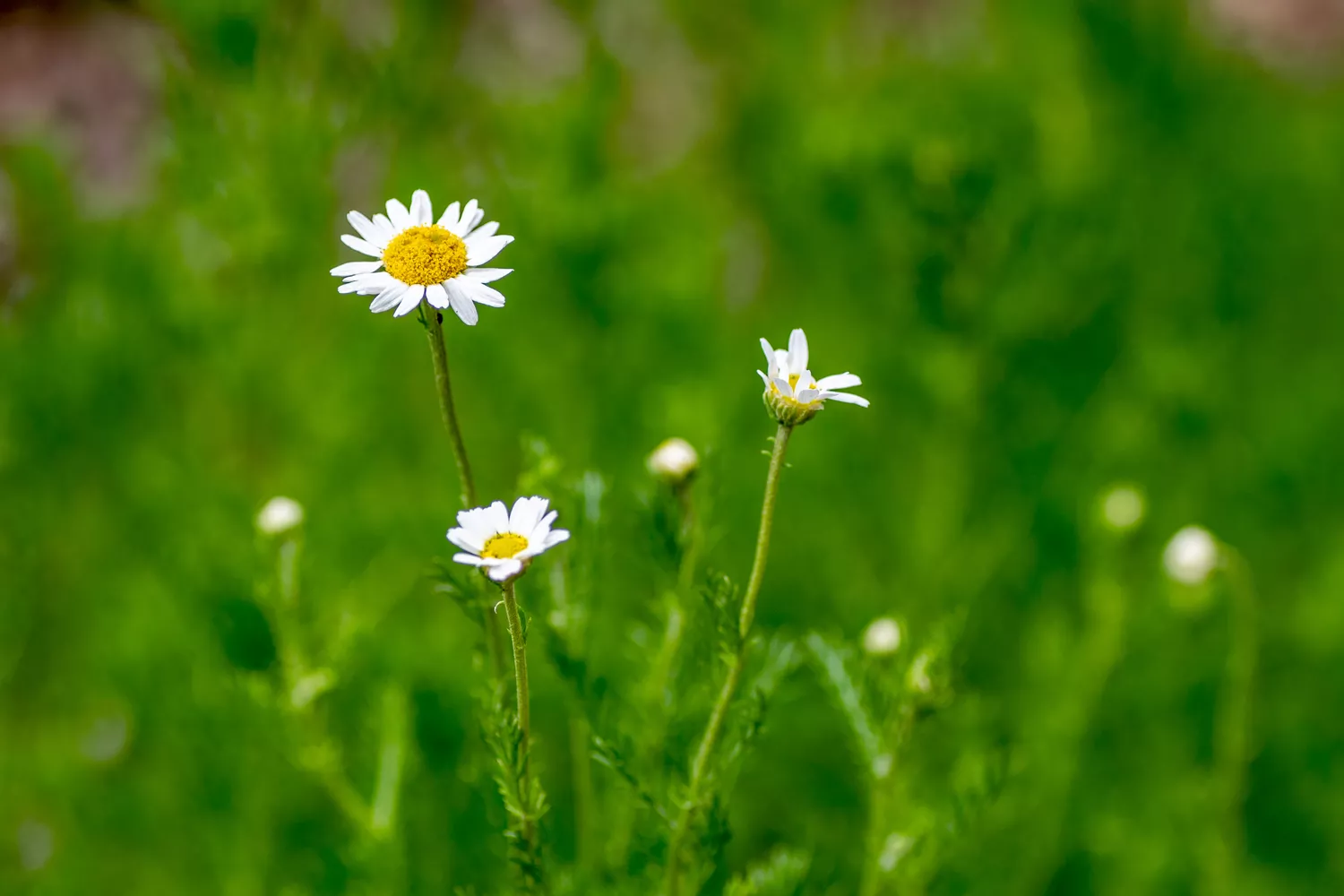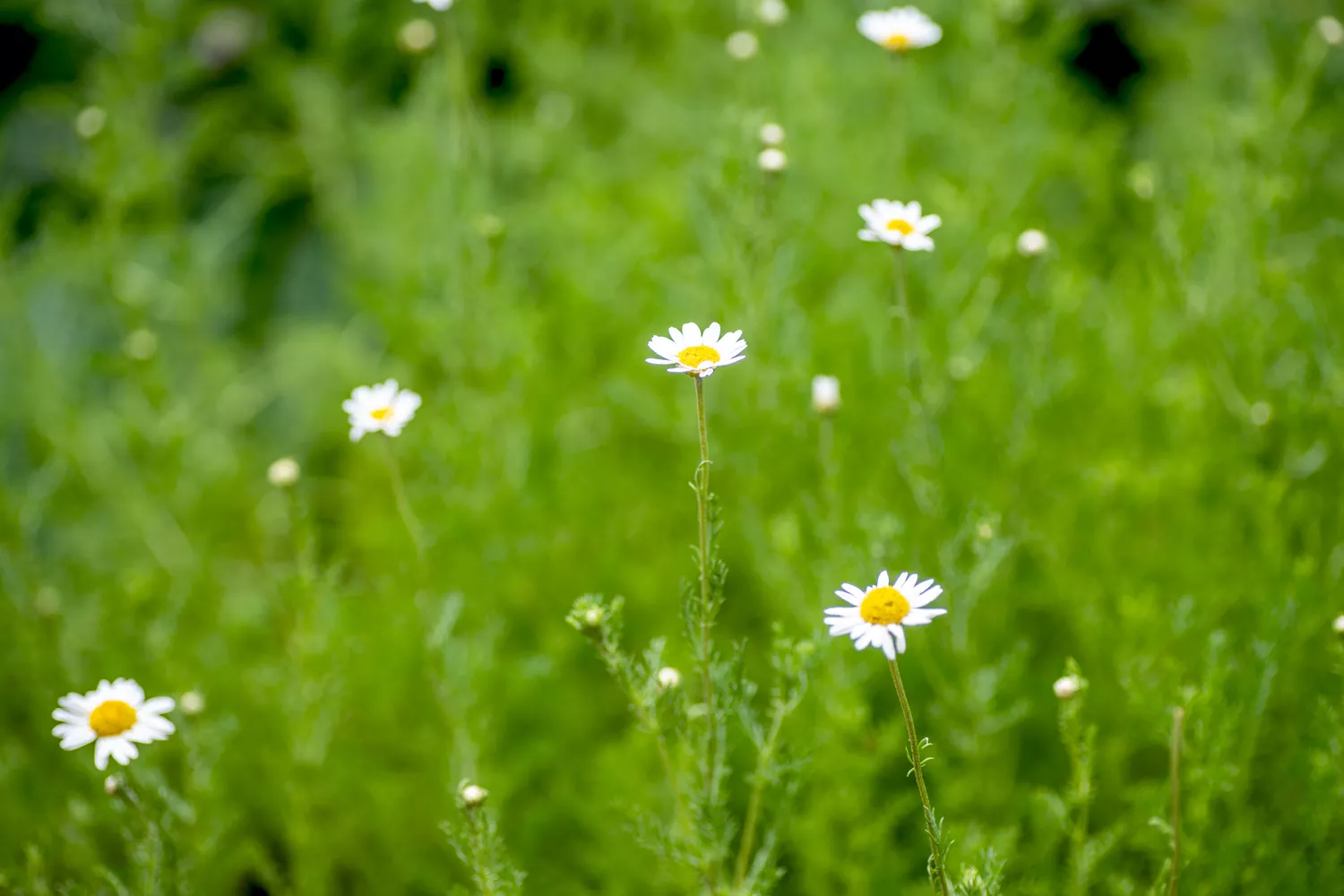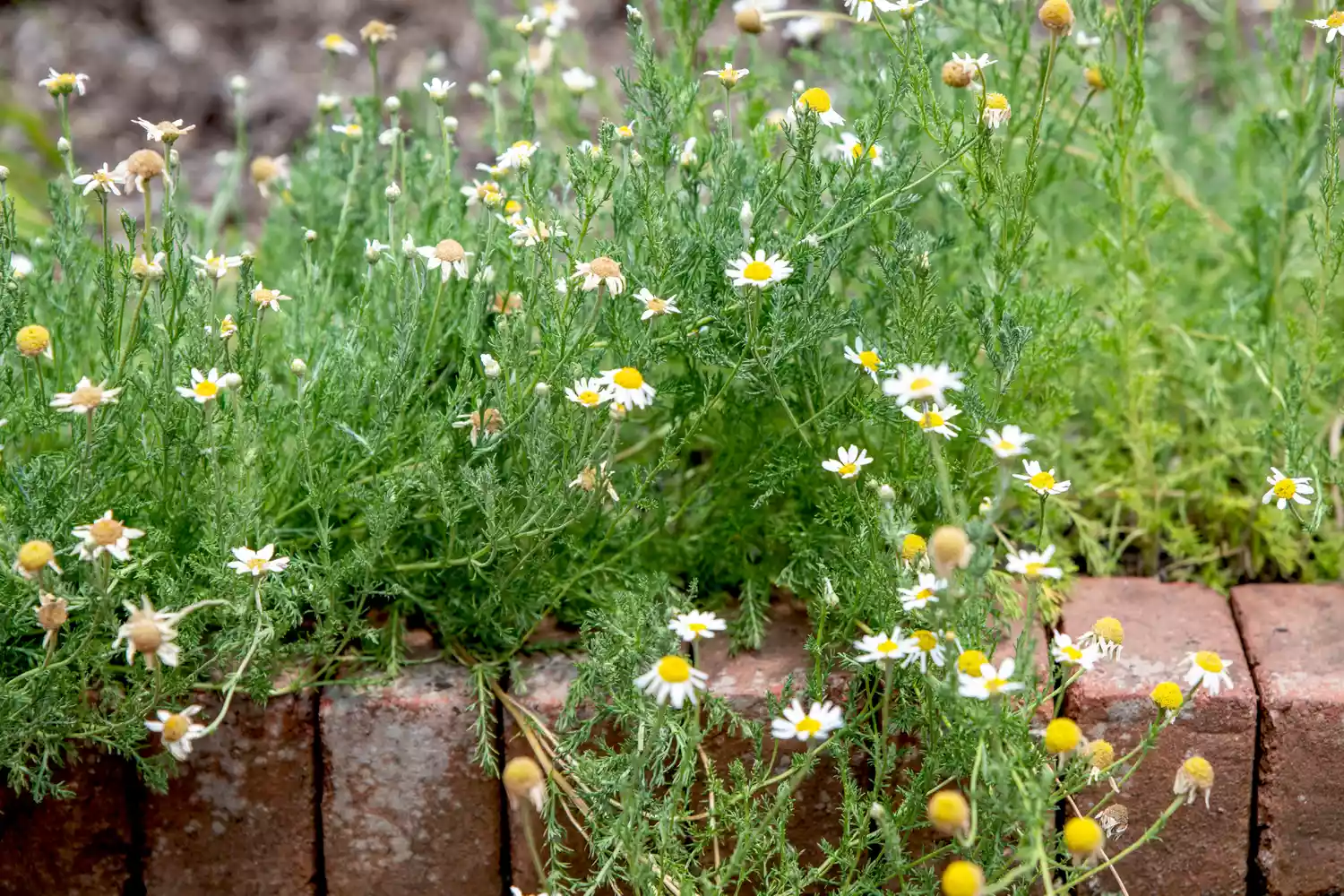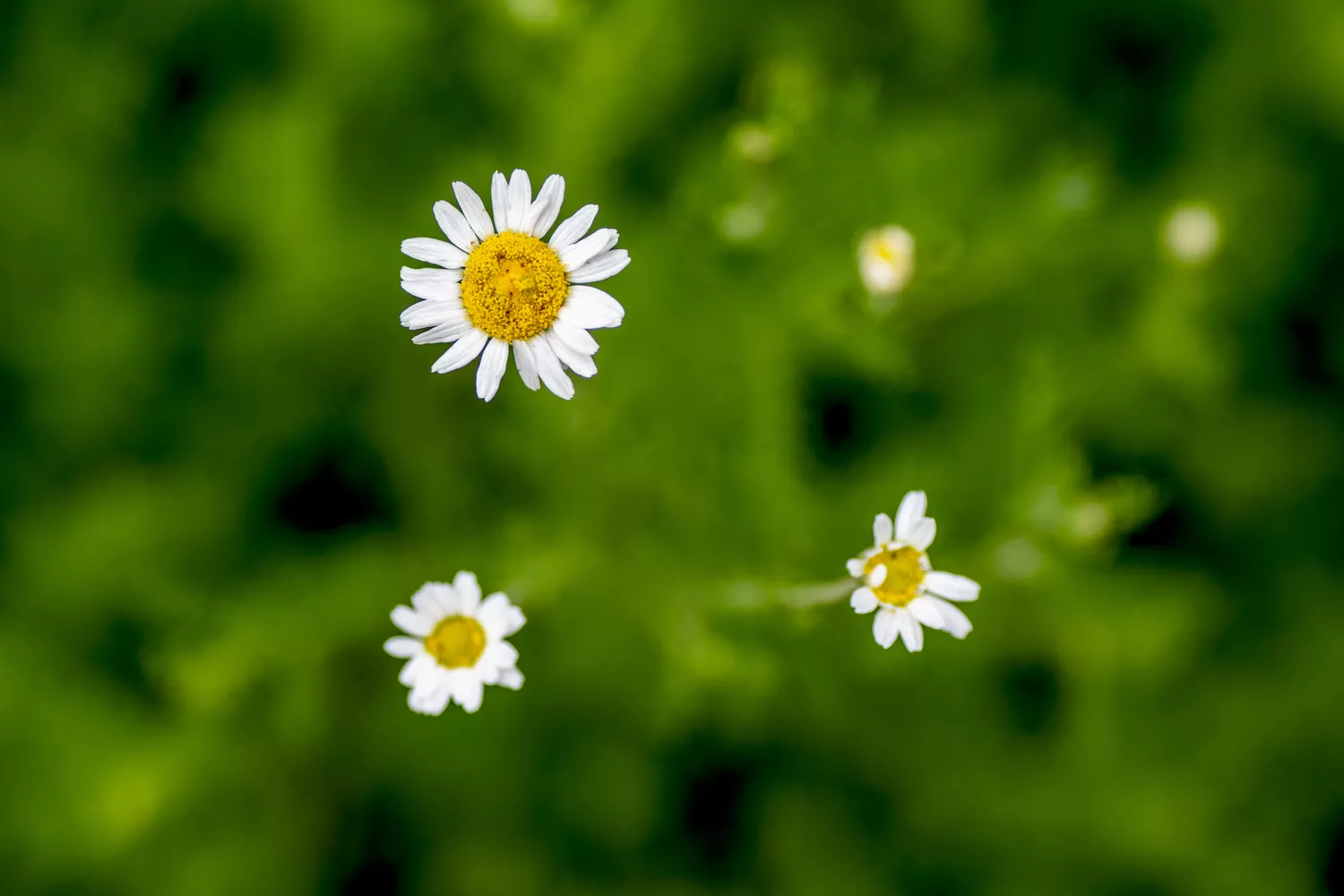
If you’ve ever wished your lawn was awash in flowers instead of grass, there’s a summertime groundcover that can make your wishes come true. Chamomile is perhaps best known for its uses in beauty products and herbal teas, but it’s also a lovely blooming addition to lawns.
Chamomile’s scientific name is Chamaemelum nobile, and it has many other common names as well. It’s also known as Roman chamomile, true chamomile, and garden chamomile. You may also hear it referred to as ground apple, sweet chamomile, or low chamomile.
It is a low-maintenance plant with a spreading habit that produces small white daisy-like flowers. In the South, the flowering season can stretch from summer into the autumn months. While often used in pots and borders, chamomile can also be easily adapted for use as a no-fuss lawn.
Plant Attributes
| Common Name | Chamomile, Roman chamomile, Barnyard daisy |
| Botanical Name | Chamaemelum nobile |
| Family | Asteraceae |
| Plant Type | Perennial |
| Mature Size | 3–12 inches tall |
| Sun Exposure | Full sun, partial shade |
| Soil Type | Well-drained |
| Soil pH | Neutral |
| Bloom Time | Spring, summer, fall |
| Flower Color | White |
| Hardiness Zones | USDA Zones 4–9 |
| Native Area | Europe |
| Toxicity | Toxic to dogs, cats, and horses1 |

Chamomile Care
This low-maintenance planting has a spreading habit and produces small white daisy-like flowers and aromatic leaves that emit an apple-like fragrance. In the South, they flower during June and July, though the flowering season can stretch into the autumn months. While often used in pots and borders, chamomile can also be easily adapted for use as a ground cover. When planted in large quantities, it creates a fragrant, no-fuss lawn.
A chamomile lawn requires moderate water and full to partial sun in order to thrive. Once planted, heavy foot traffic will take its toll, while light and occasional walking is more likely to keep the lawn looking its best.

Light
German chamomile grows well in full sun to part shade, but if you’re looking for that explosion of little blooms, plant chamomile in full sun where more light and heat will result in fuller plants and blooms. If you find you get too much sun and the blooms are burning— which can happen in the South—you can plant them in filtered light.
Soil
Chamomile can grow in many soil types but prefers neutral soil. If you have poor soil, amend it with organic material to create a better growing environment.
Water
Established chamomile is pretty drought tolerant, but it’s best to let it dry out between waterings. When faced with drought, continue watering chamomile.
Temperature and Humidity
Chamomile prefers moderate temperatures. Chamomile prefers dry climates and will not grow at its best in excessive humidity.
Fertilizer
You don’t need to fertilize chamomile. It will grow well without it!
Types of Chamomile
- ‘Treneague’ is a nonflowering selection.
- ‘Flore Pleno’ has double daisy-like flowers.
- Matricaria chamomilla is native to Europe and Western Asia. The aromatic plant grows to 2 ft. tall and 1 1/2 ft. wide, with finely cut, almost fernlike foliage. White and yellow daisy-type flowers to 1 in. wide bloom in summer. Grows easily in most soils; sow seed in late winter or spring. Valued for its herbal use: dried flowers are used in making the familiar, fragrant chamomile tea.

How to Grow Chamomile From Seed
For best results, plant chamomile seed in the spring. This fast grower will reach full bloom within about 10 weeks. The Roman chamomile variety is grown as a groundcover or in rocky walls or stone paths. The German chamomile is generally grown for making tea.





